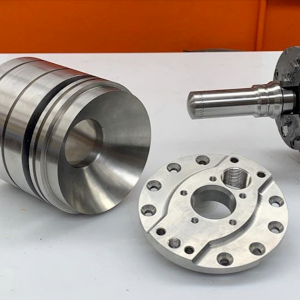
Oregon State University’s (OSU) High Altitude Liquid Engine (HALE) team is a student organization operating under the university’s local chapter of the American Institute of Aeronautics and Astronautics (AIAA). Work is underway to research, design, and build a single stage, bi-propellant, liquid engine rocket capable of reaching the Kármán Line, an altitude of 100 km or 62.1 miles. This is part of the team’s participation in the Base 11 Space Challenge that is being hosted as a collaboration between Base 11, HeroX, and a number of additional corporate sponsors. The team must successfully launch its vehicle by 30 December 2021 when the competition’s final launch window closes.
The regeneratively cooled nozzle that this subteam is designing will enable the HALE team to achieve the thrust necessary for launch, as well as keep the nozzle at an acceptable operating temperature during the long burn necessary to reach the Kármán Line. Achieving this goal requires making the necessary mathematical calculations to quantify the nozzle areas at the inlet, throat, and exit to aid in the design of a test apparatus capable of collecting vital heat flux data at the throat of the nozzle. This heat flux data can then be used to calculate the necessary heat transfer requirements and eventually to validate the findings via the Rocket Propulsion Analysis (RPA) software suite. Once validation of the key quantities and concepts has been achieved a final design can be created and prepared for prototyping.
Heat flux is a quantification of the heat transfer per unit area, per unit time, and is used to characterize the thermal energy present in the system. This test fixture consists of a primitive regen nozzle with fluid channels and temperature probes which supply data to a data acquisition module (DAQ). Collected temperature, pressure, and mass flow rate data are then used to calculate the heat flux present at the throat of the nozzle. Manual calculations, and eventually RPA software validation, stemming from this data will be used to design and optimize the final nozzle design.
The regenerative nozzle subteam consists of James Stark (subteam lead and CAD systems/assembly lead), Justin Morgan (mechanical analysis lead, RPA lead, machining coordinator), Lukas Dumestre (thermal analysis lead, RPA assistant), and Brendan Deal (testing and materials lead and meeting coordinator). They worked under the guidance of Devon Burson, key stakeholder, and the instruction of Dr. Nancy Squires, faculty advisor. The regenerative nozzle subteam produced this work as part of the larger HALE team efforts to satisfy the requirements of HeroX and the Base11 space challenge customer group.
